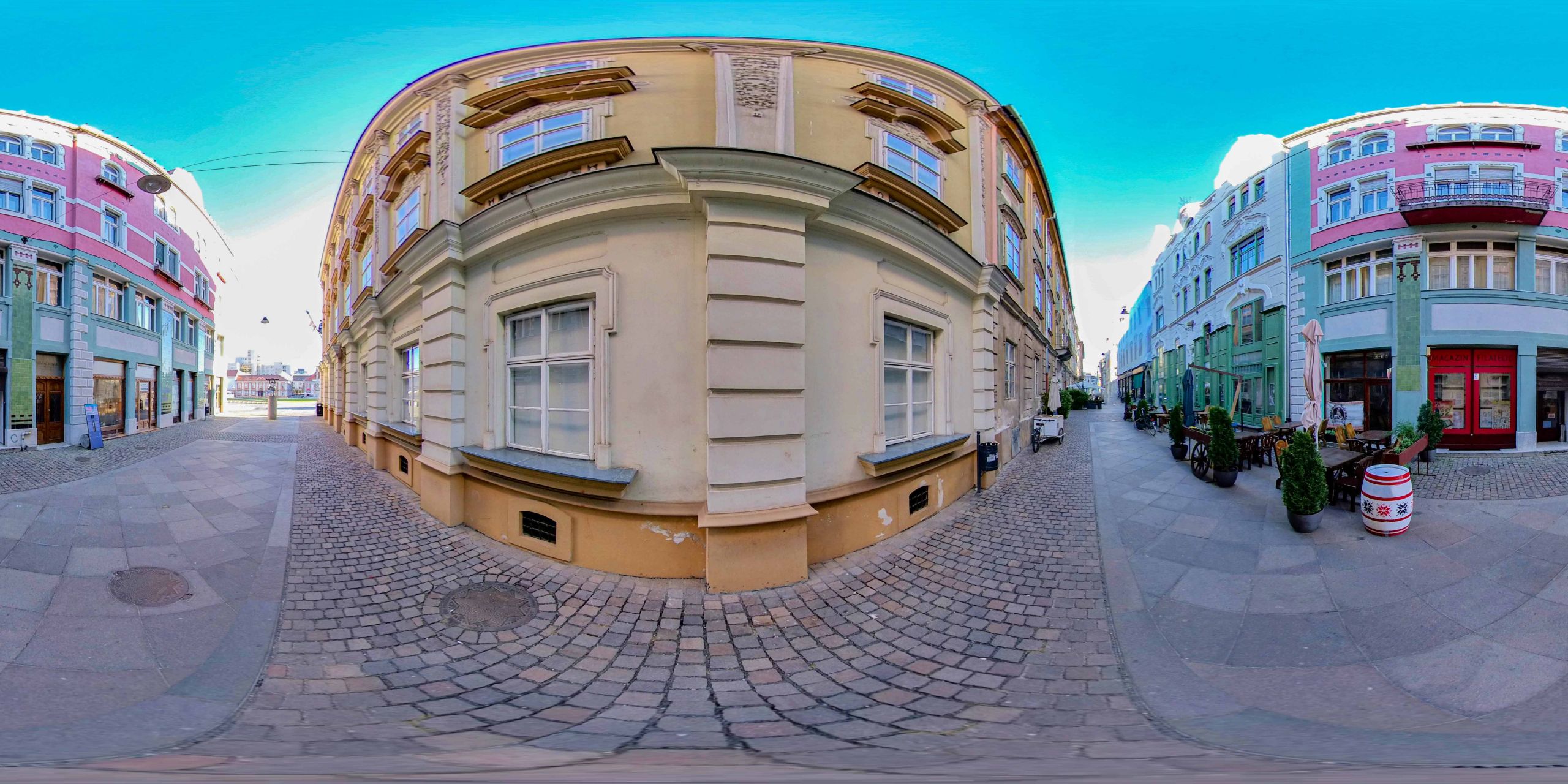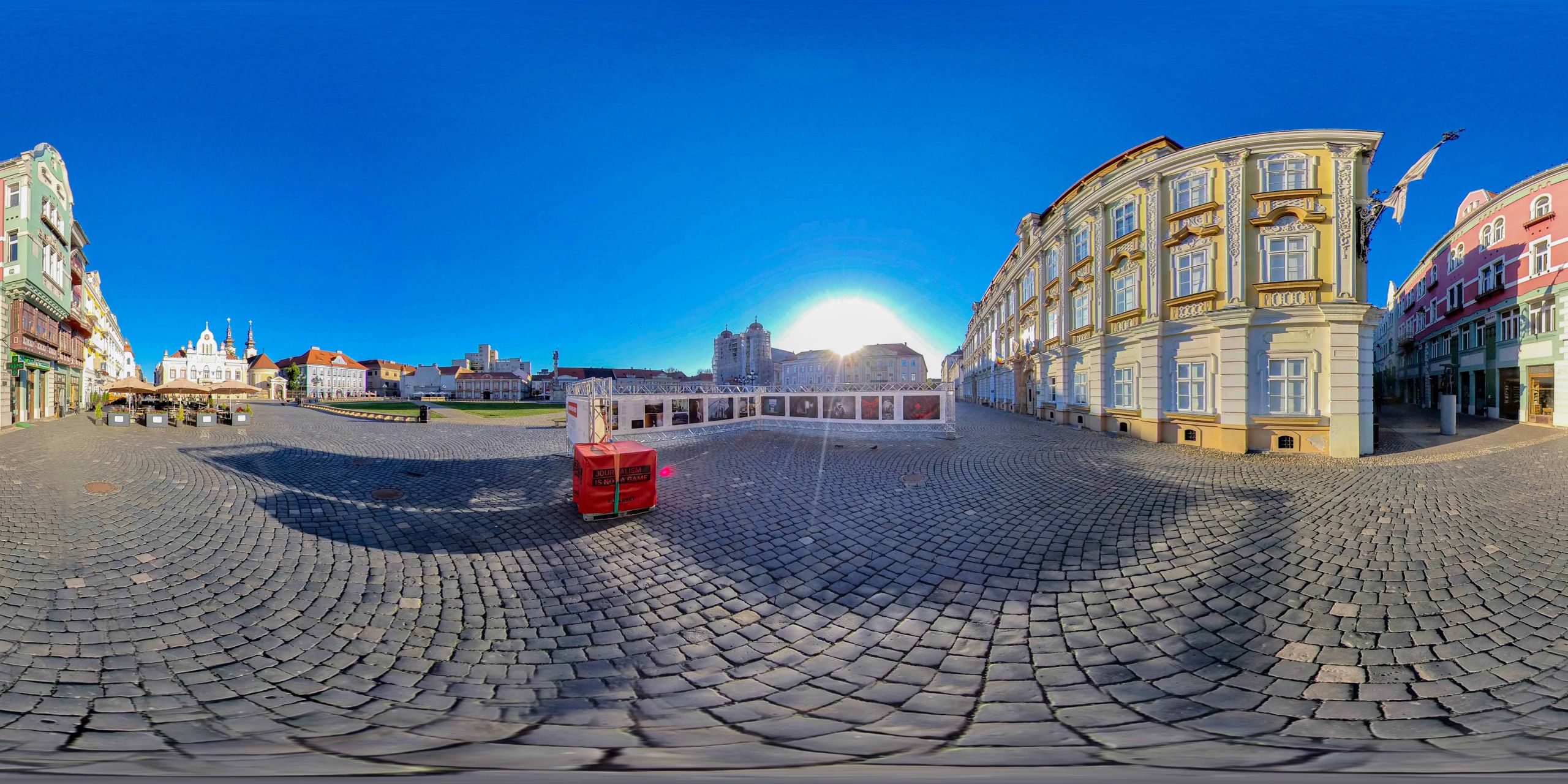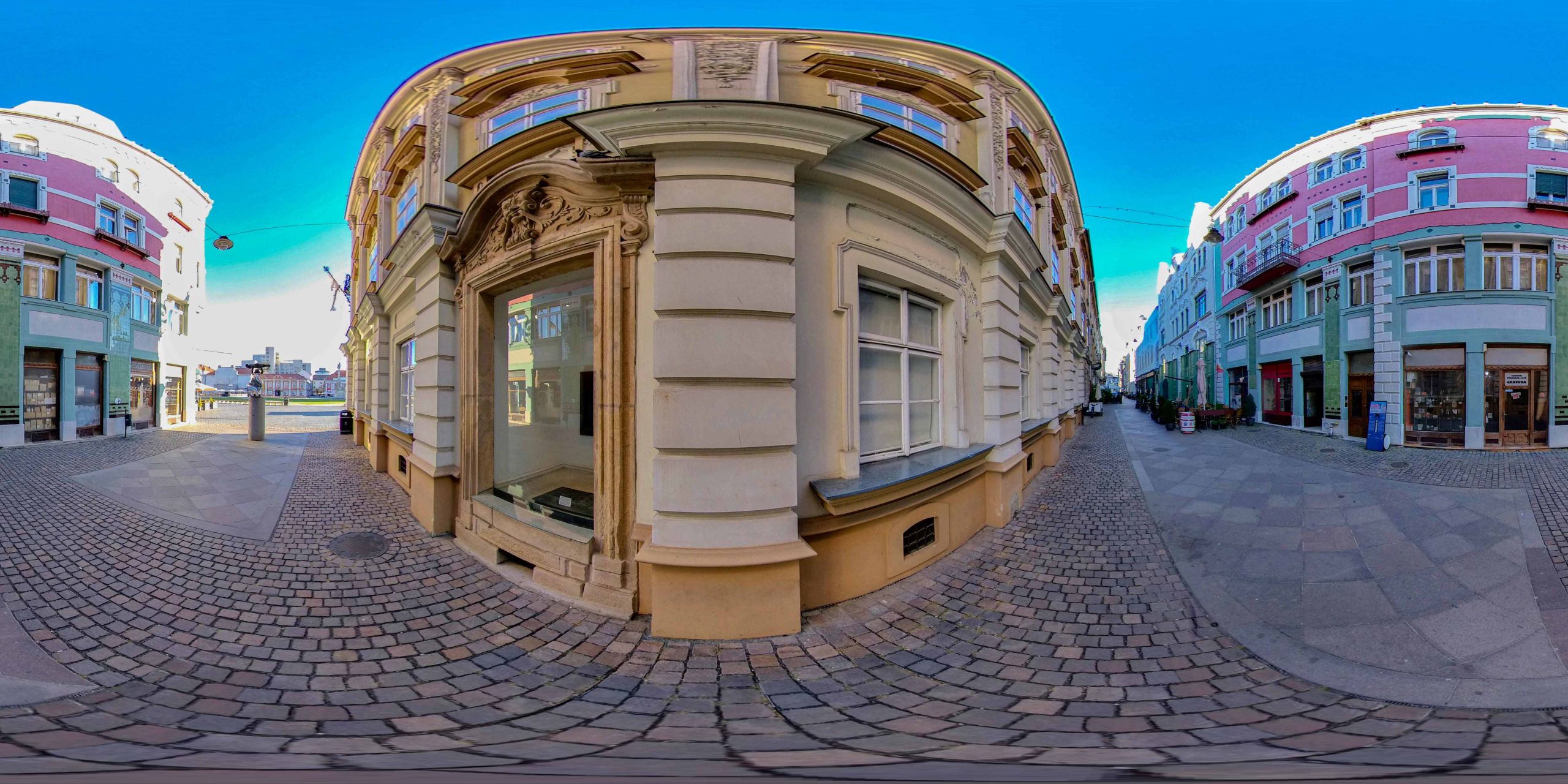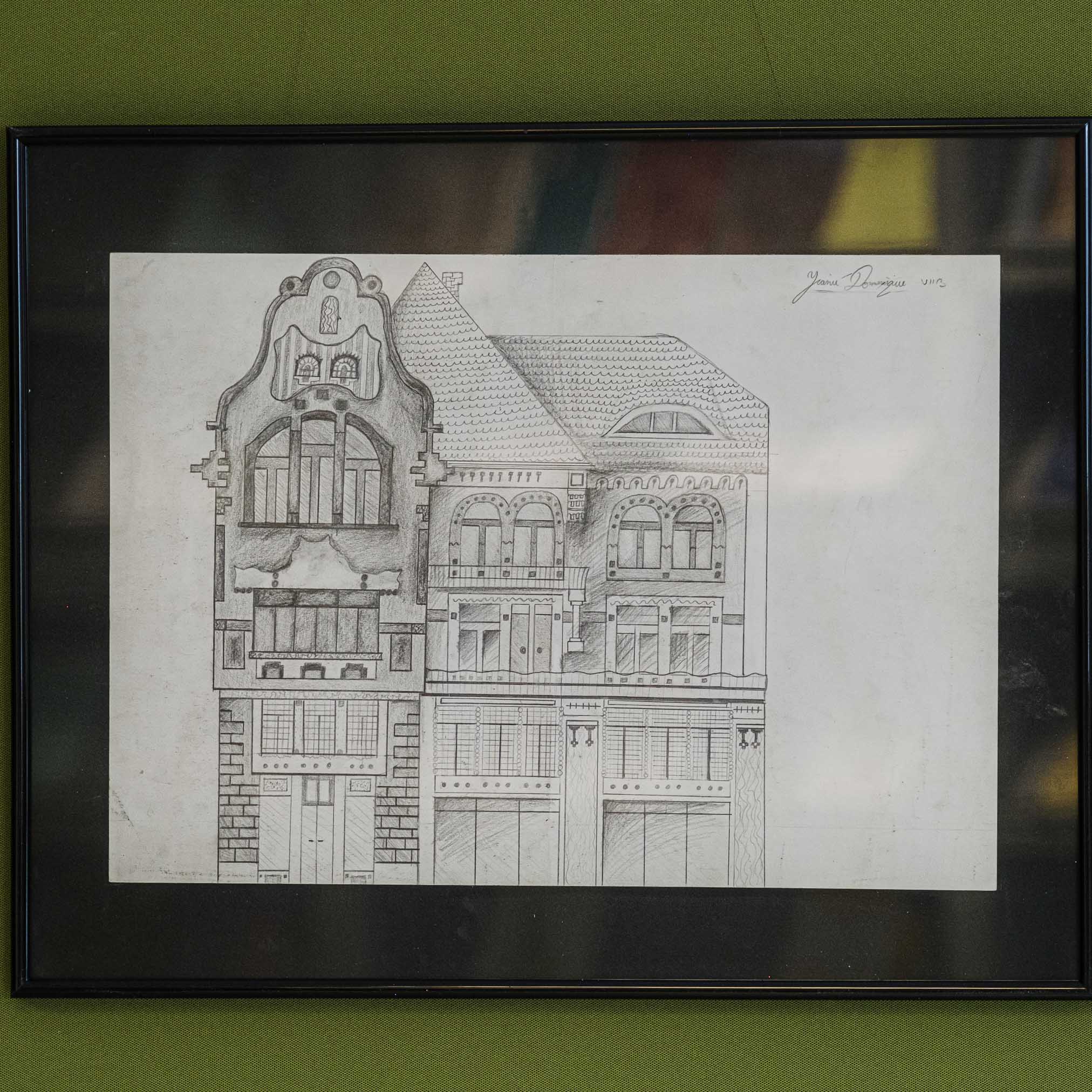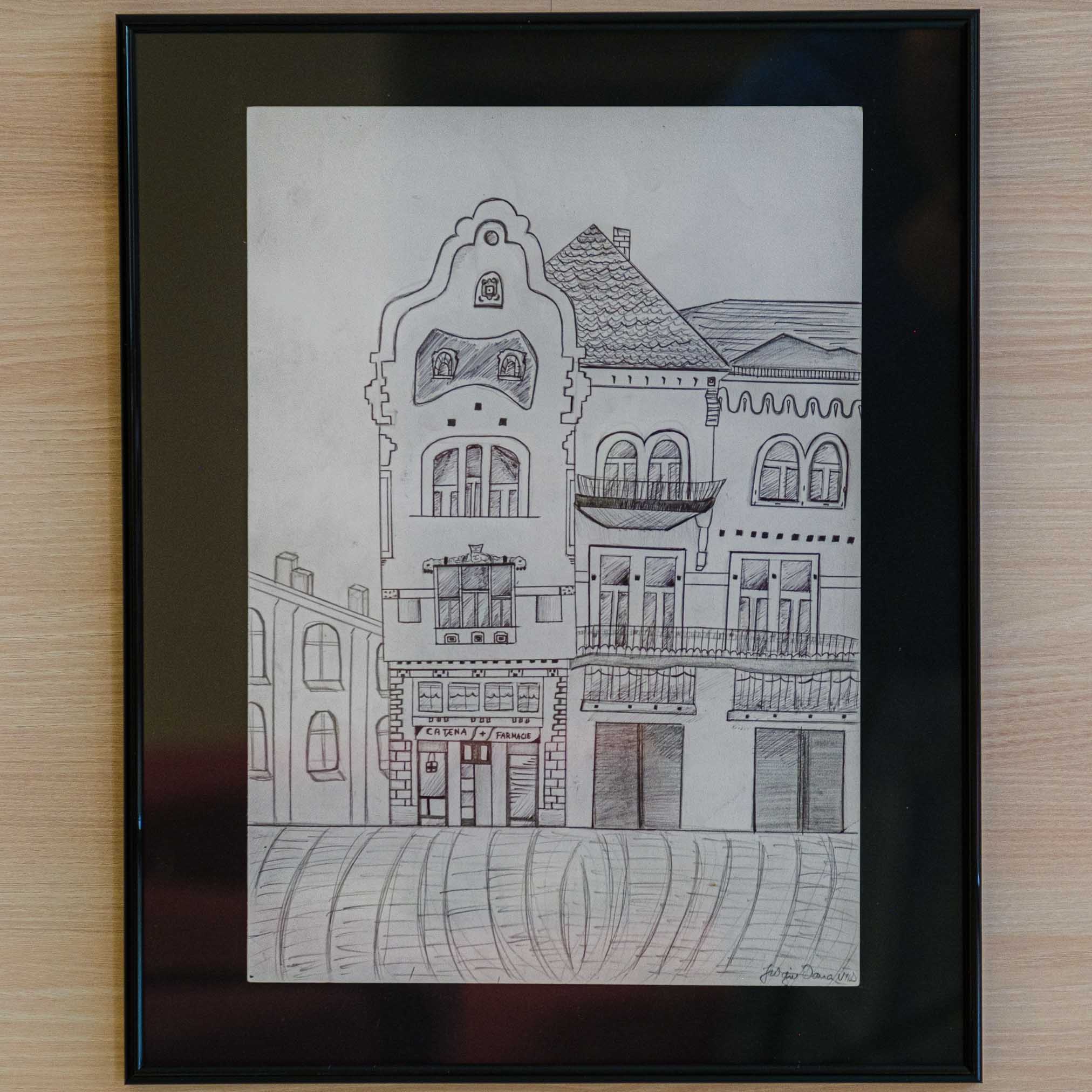On the southern side of the Union Square, in the immediate vicinity of the Baroque Palace, stands one of the most recognizable buildings of Timisoara - the Salamon Brück Palace. Built according to the plans of the Timisoara architect László Székely, in the Secession style, the palace was completed in the summer of 1911.
Listen to the audio version.
On the southern side of Union Square, in the immediate vicinity of the Baroque Palace, stands one of the most recognizable buildings of Timisoara - the Salamon Brück Palace.
Until the beginning of the 20th century, at the location of the current building, there was a much more modest building from an architectural point of view. The new palace, owned by Salamon Brück, was built according to the plans of the Timisoara architect László Székely. Designed in the Secession style, with a building permit obtained on April 16, 1910, the palace was completed in the summer of 1911 and was designed as a report building.
Through the volumetric play of the roof, the Secession ornaments and the ceramic details specific to Hungarian architecture, the palace with its four levels stands out in the perimeter of Union Square, contrasting with the predominantly baroque architecture of the square.
The current building is closely linked to the history of Timisoara pharmacies. Stefan Geml's pharmacy, called "Golden Cross", has been operating on the ground floor of the old building since 1898. The tradition has been preserved, so that a pharmacy was opened on the ground floor of the Brück Palace, the pharmaceutical point continuing to exist during the tumultuous twentieth century, to this day.
Recently restored (2009 - 2011 by architect Marcela Titz), the Brück Palace is one of the favorite buildings of the city, both for Timisoara residents and for foreign tourists.
Bibliography:
- https://heritageoftimisoara.ro/cladiri/Cetate/adresa/Florimund+Mercy/9. site accessed in May 2022.
- Mihai Opriș, Mihai Botescu, Historic architecture in TimișoaraPrinted by S.C. Tempus S.R.L, Timisoara, 2014, ISBN 978-973-1958-28-6.
Brück Palace
Listen to the audio version.
“And again, houses. Shabby or better-off, all helter-skelter. All the way to the city center. This is where the big houses emerged - their owners liked to call them earnestly ‘palaces’ - clearly designed to make it obvious at first glance that their owners were not just anyone. All three or four stories high, bulky, lofty, blatantly rich in flourishes or more or less mythological stucco monsters. Here and there in the city, where you least expected it, rose, like rotten back teeth in a mouth full of gold teeth, traces of the past: a fortress wall, a black underground opening masked by luxuriant weeds, which would strike one with a damp, foul-smelling chill.” (Radu Ciobanu, Twilight, Bucharest, Eminescu Publishing House, 1971, p. 15)
Listen to the audio version.
It's been more than half a decade since I moved, study and live in Timisoara. All this time I have been asked "Why Timisoara?" or "Well, what do you like so much about Timișoara?" and I don't think I have ever given a concrete answer to people who have asked me this, but I have simply said "I don't know, but I like it. I like it a lot."
However, recently I've caught myself looking up streets I've never been down, stopping and reading signs I've never seen before and looking at walls I've never looked at before, and with each line I read on the signs, walls, walls and posters, I realized why I love this city so much. I love it because of its history, culture and vibrant feelings and it never fails to surprise me.
I discovered Timișoara at a walking pace since I first set foot in the city. I walked the streets big and small and always had to change my route just because I saw a particular building, an intriguing bas-relief or a new sign on one of the buildings I was passing. Reading and learning long-told stories, I discovered Timișoara, but not my Timișoara of the present, but a Timișoara of the past. I discovered what I love so much about this city, besides the people, culture and history. I love buildings!
All the buildings steeped in history, the hundreds of little palaces of the city, all the bits of bastion they find around town. All those ornaments, bas-reliefs, decorations and little details that tell the story of the past, of the style of construction, but also of the owners they once had. I can now say with certainty why I love Timișoara.
I love it because everywhere I look I see history, colours, shapes and a different life, as if I'm looking in real time through a prism of the past.
I remember how, for the first time, I was fascinated by two buildings in the city, and both of them are in the same square - the vibrant and colourful Unirii Square. The first time I said "wow" in a low, whispered voice was when I saw the Museum of Art in the light of the sunset and how every spectrum of rainbow colour was reflected in its windows in a calm, serene light on a warm July evening.
The second "wow", but slightly louder than the first, was when I moved my gaze a few feet to the right and was struck by an explosion of colours that I never expected to see together, but which I thought would complement each other.
"That's the house with eyes." I remember hearing someone next to me. I didn't know the person. A complete stranger, but one who saw how hooked I was on architecture that he decided to get into it with me.
"House with eyes?"I asked. And I am answered in the affirmative, and then I see an arm reach out in front of me and point to the windows on the facade, two, small, semi-oval ones. "Ochii"I hear from next to me. "And up on the roof", the stranger fills in, pointing above. And when I looked up, yes, that's exactly what it was. There were eyes, looking gallantly towards the square - towards people. It was like he was watching them.
I remember I didn't ask too many questions then, especially since I wasn't used to a stranger talking to me out of nowhere. I thanked him, though, and left. I've been calling him "the house with eyes" ever since. I introduced it as "the house with eyes" to my friends, to acquaintances, to anyone who told me they wanted to visit Timișoara, I said "You must go and see the house with your eyes! It's gorgeous!". I didn't care much for her origin or her real name, but I found the physical description, given by that stranger in the market on a July evening long ago, magical. I haven't known her name since then, but I didn't seem to want to know, and yet it was that strange description that made me find out her real name.
Another friend once told me he was coming to visit me and see Timisoara. Me, same speech, "You have to see the house with your eyes!", to which his confused question "Home with what?" It was already a standard for me, except she was the first person to ask to see it before she physically came to town. I told her I'd show it to her, but the simple Google search with the phrase. "house with eyes timisoara" didn't yield any favorable results, which surprised me, because I thought it was such a popular landmark among the locals that it took on the name they gave it, not necessarily the official one.
The first attempt told me: "Salamon Brück Palace Timisoara", and I thought it was wrong, so I looked again, and since Google always wants to be right it told me I was wrong and that in fact the "house with eyes" is a palace and one with a history and architecture as interesting as the explanation of that stranger from long ago who spoke to me from another life. I sent the picture to my friend, but I didn't let the new information that was haunting my head simply disappear.
In the course of two days I read as much as I could about this palace, about Brück and its history, that I seemed to understand its importance and magic even more.
So, the magical description of 6 years ago, about "houses with eyes" and warm and open welcoming strangers met on a distant summer day has taken on a new, even more magical, but more real shape. The eyes are "Brück's eyes", who continues to follow a Timișoara not from the past, but from the future, arriving in our present and watching us galloping through our lives around his palace.
Daciana G, UPT student, 2023
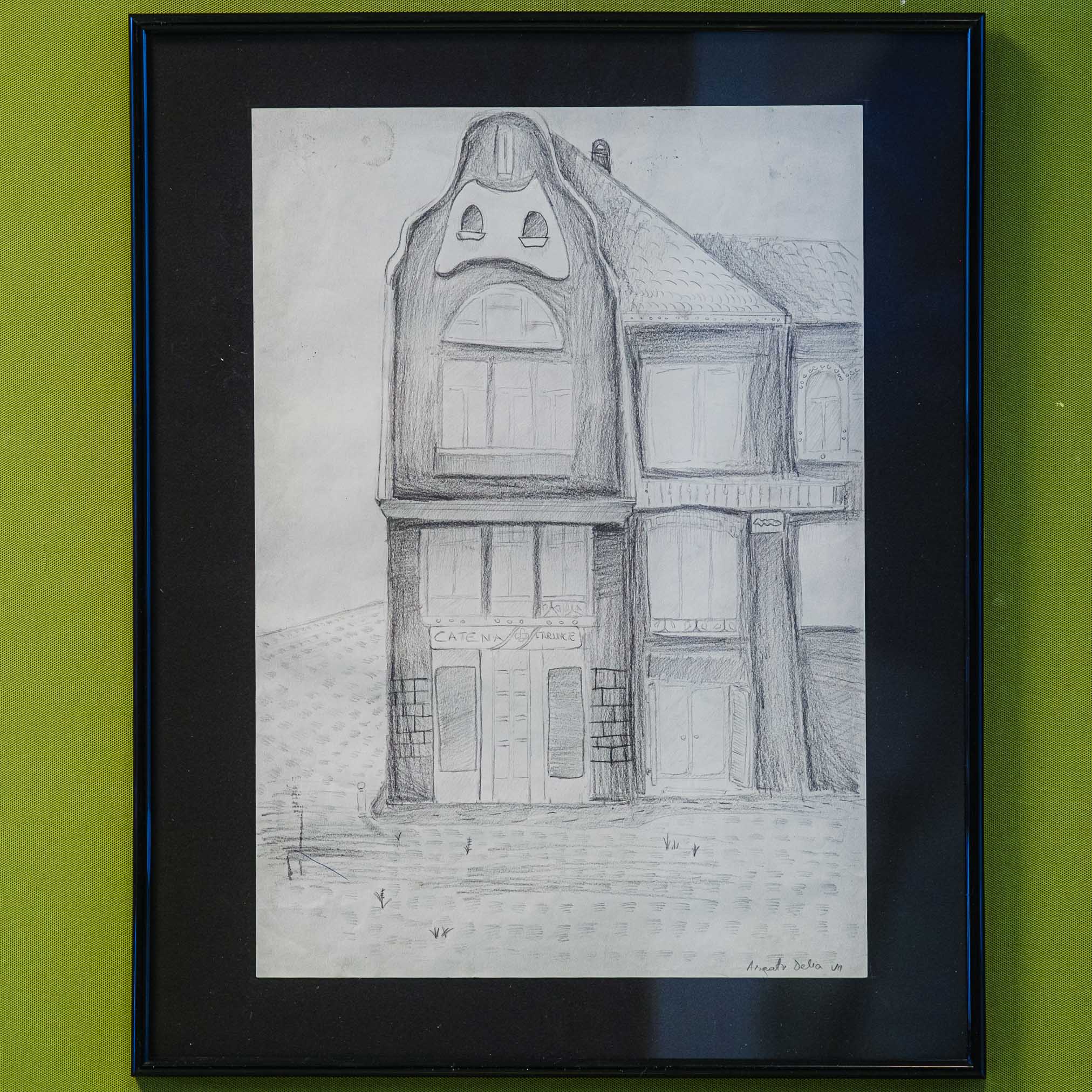
Artwork by Argatu Delia, 7th grade student General School No 19 "Avram Iancu" and exposed to UPT Library within the exhibition "Timisoara's Stories - A Visual Journey through Timisoara" - within the Creative Schools Project - Timisoara's Stories - a continuation of the Spotlight Heritage Timisoara project, part of the cultural program of the Timisoara Cultural Capital 2023 - project that brought together over 1600 children and teenagers and more than 60 teachers from Timisoara's schools, in over 50 interactive activities.
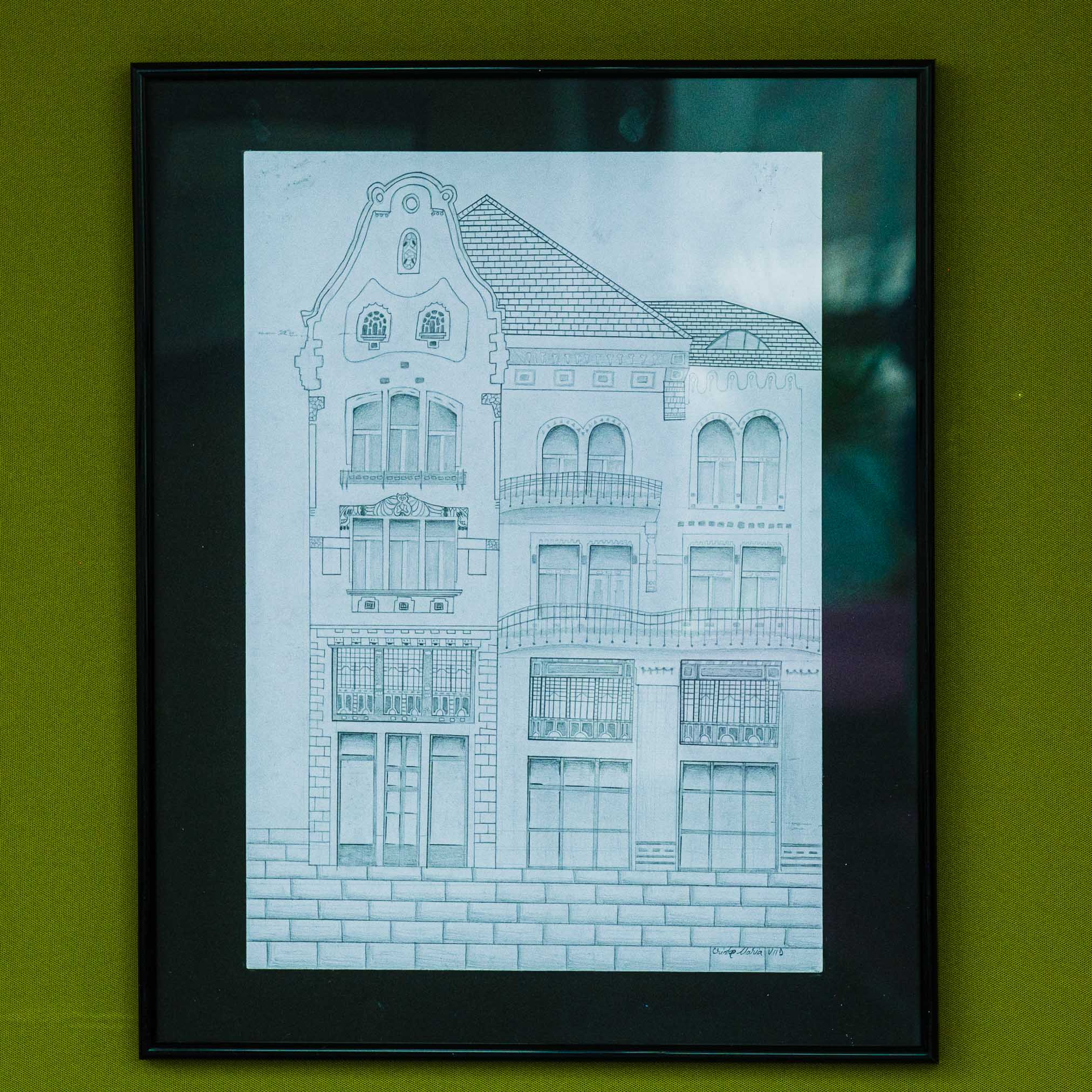
Artwork by Maria Criste, 7th grade D student General School No 19 "Avram Iancu" and exposed to UPT Library within the exhibition "Timisoara's Stories - A Visual Journey through Timisoara" - within the Creative Schools Project - Timisoara's Stories - a continuation of the Spotlight Heritage Timisoara project, part of the cultural program of the Timisoara Cultural Capital 2023 - project that brought together over 1600 children and teenagers and more than 60 teachers from Timisoara's schools, in over 50 interactive activities.

Artwork by Sonia Eftime, 8th grade B student General School No 19 "Avram Iancu" and exposed to UPT Library within the exhibition "Timisoara's Stories - A Visual Journey through Timisoara" - within the Creative Schools Project - Timisoara's Stories - a continuation of the Spotlight Heritage Timisoara project, part of the cultural program of the Timisoara Cultural Capital 2023 - project that brought together over 1600 children and teenagers and more than 60 teachers from Timisoara's schools, in over 50 interactive activities.
Artwork by Jianu Dominique, student in grade VII B General School No 19 "Avram Iancu" and exposed to UPT Library within the exhibition "Timisoara's Stories - A Visual Journey through Timisoara" - within the Creative Schools Project - Timisoara's Stories - a continuation of the Spotlight Heritage Timisoara project, part of the cultural program of the Timisoara Cultural Capital 2023 - project that brought together over 1600 children and teenagers and more than 60 teachers from Timisoara's schools, in over 50 interactive activities.

Artwork by Criste Hadasa, 8th grade student General School No 19 "Avram Iancu" and exposed to UPT Library within the exhibition "Timisoara's Stories - A Visual Journey through Timisoara" - within the Creative Schools Project - Timisoara's Stories - a continuation of the Spotlight Heritage Timisoara project, part of the cultural program of the Timisoara Cultural Capital 2023 - project that brought together over 1600 children and teenagers and more than 60 teachers from Timisoara's schools, in over 50 interactive activities.

Artwork by Maria Oprișa, 9th grade A student "Grigore Moisil" Theoretical High School in Timișoara and exposed to UPT Library within the exhibition "Timisoara's Stories - A Visual Journey through Timisoara" - within the Creative Schools Project - Timisoara's Stories - a continuation of the Spotlight Heritage Timisoara project, part of the cultural program of the Timisoara Cultural Capital 2023 - project that brought together over 1600 children and teenagers and more than 60 teachers from Timisoara's schools, in over 50 interactive activities.

Artwork by Karina Horescu, 9th grade B student "Grigore Moisil" Theoretical High School in Timișoara and exposed to UPT Library within the exhibition "Timisoara's Stories - A Visual Journey through Timisoara" - within the Creative Schools Project - Timisoara's Stories - a continuation of the Spotlight Heritage Timisoara project, part of the cultural program of the Timisoara Cultural Capital 2023 - project that brought together over 1600 children and teenagers and more than 60 teachers from Timisoara's schools, in over 50 interactive activities.
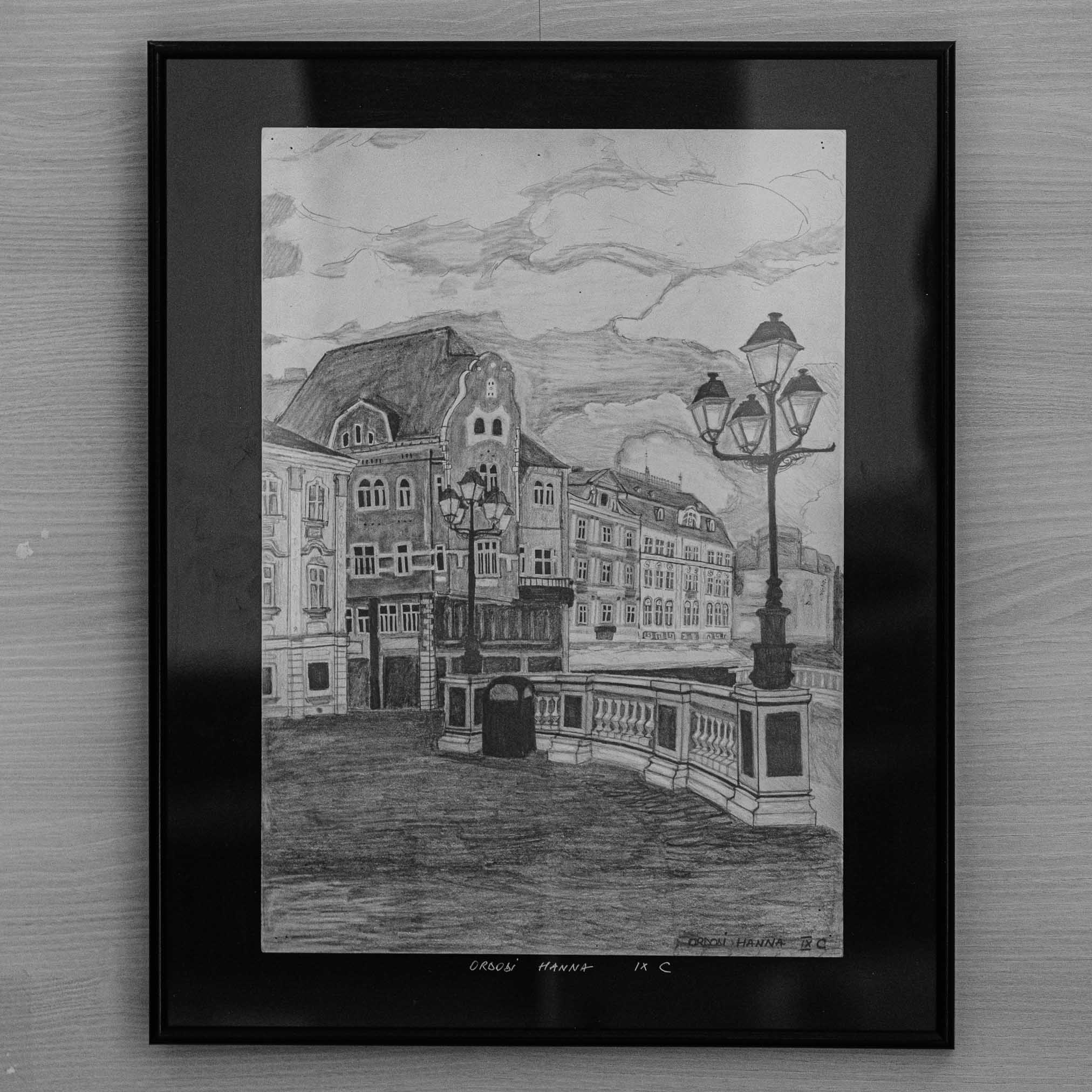
Artwork by Hanna Ordodi, 9th grade C student "Grigore Moisil" Theoretical High School in Timișoara and exposed to UPT Library within the exhibition "Timisoara's Stories - A Visual Journey through Timisoara" - within the Creative Schools Project - Timisoara's Stories - a continuation of the Spotlight Heritage Timisoara project, part of the cultural program of the Timisoara Cultural Capital 2023 - project that brought together over 1600 children and teenagers and more than 60 teachers from Timisoara's schools, in over 50 interactive activities.
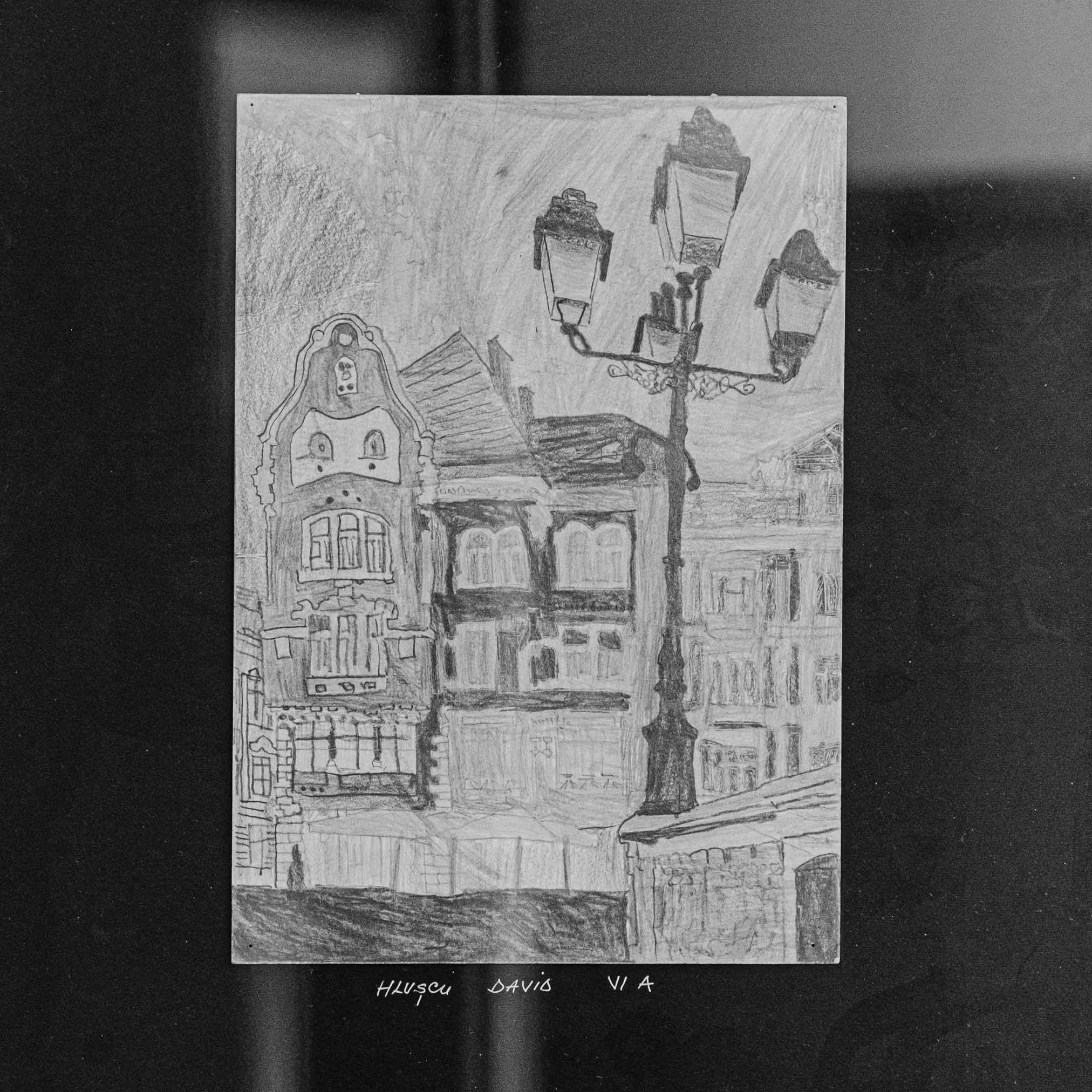
Artwork by Hlușcu David, student in class VI A of General School No 19 "Avram Iancu" and exposed to UPT Library within the exhibition "Timisoara's Stories - A Visual Journey through Timisoara" - within the Creative Schools Project - Timisoara's Stories - a continuation of the Spotlight Heritage Timisoara project, part of the cultural program of the Timisoara Cultural Capital 2023 - project that brought together over 1600 children and teenagers and more than 60 teachers from Timisoara's schools, in over 50 interactive activities.

Artwork by Lorena Crețu-Florea, 9th grade E student "Grigore Moisil" Theoretical High School in Timișoara and exposed to UPT Library within the exhibition "Timisoara's Stories - A Visual Journey through Timisoara" - within the Creative Schools Project - Timisoara's Stories - a continuation of the Spotlight Heritage Timisoara project, part of the cultural program of the Timisoara Cultural Capital 2023 - project that brought together over 1600 children and teenagers and more than 60 teachers from Timisoara's schools, in over 50 interactive activities.

Artwork by Mara Gutu, 10th grade D student "Grigore Moisil" Theoretical High School in Timișoara and exposed to UPT Library within the exhibition "Timisoara's Stories - A Visual Journey through Timisoara" - within the Creative Schools Project - Timisoara's Stories - a continuation of the Spotlight Heritage Timisoara project, part of the cultural program of the Timisoara Cultural Capital 2023 - project that brought together over 1600 children and teenagers and more than 60 teachers from Timisoara's schools, in over 50 interactive activities.
